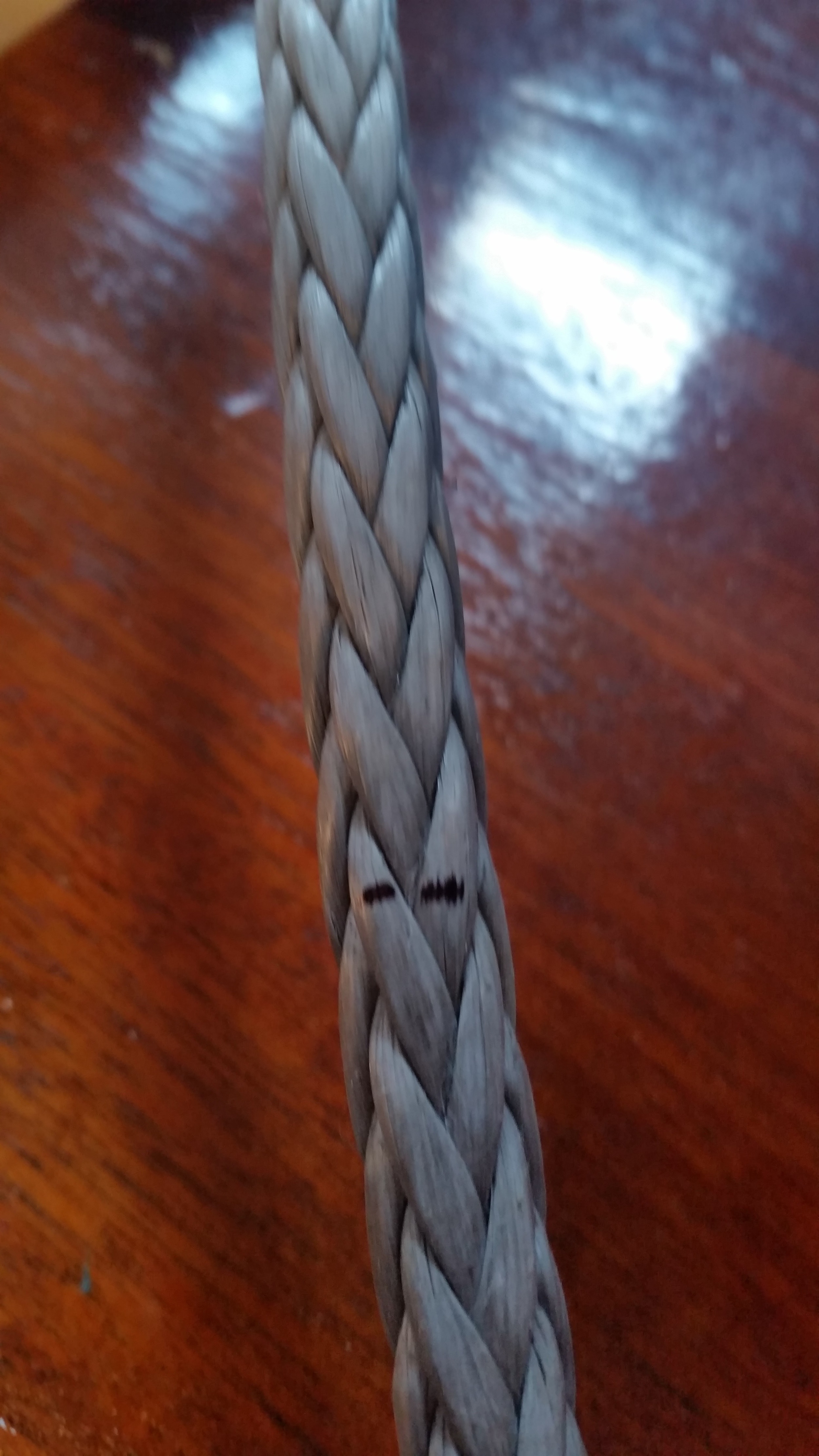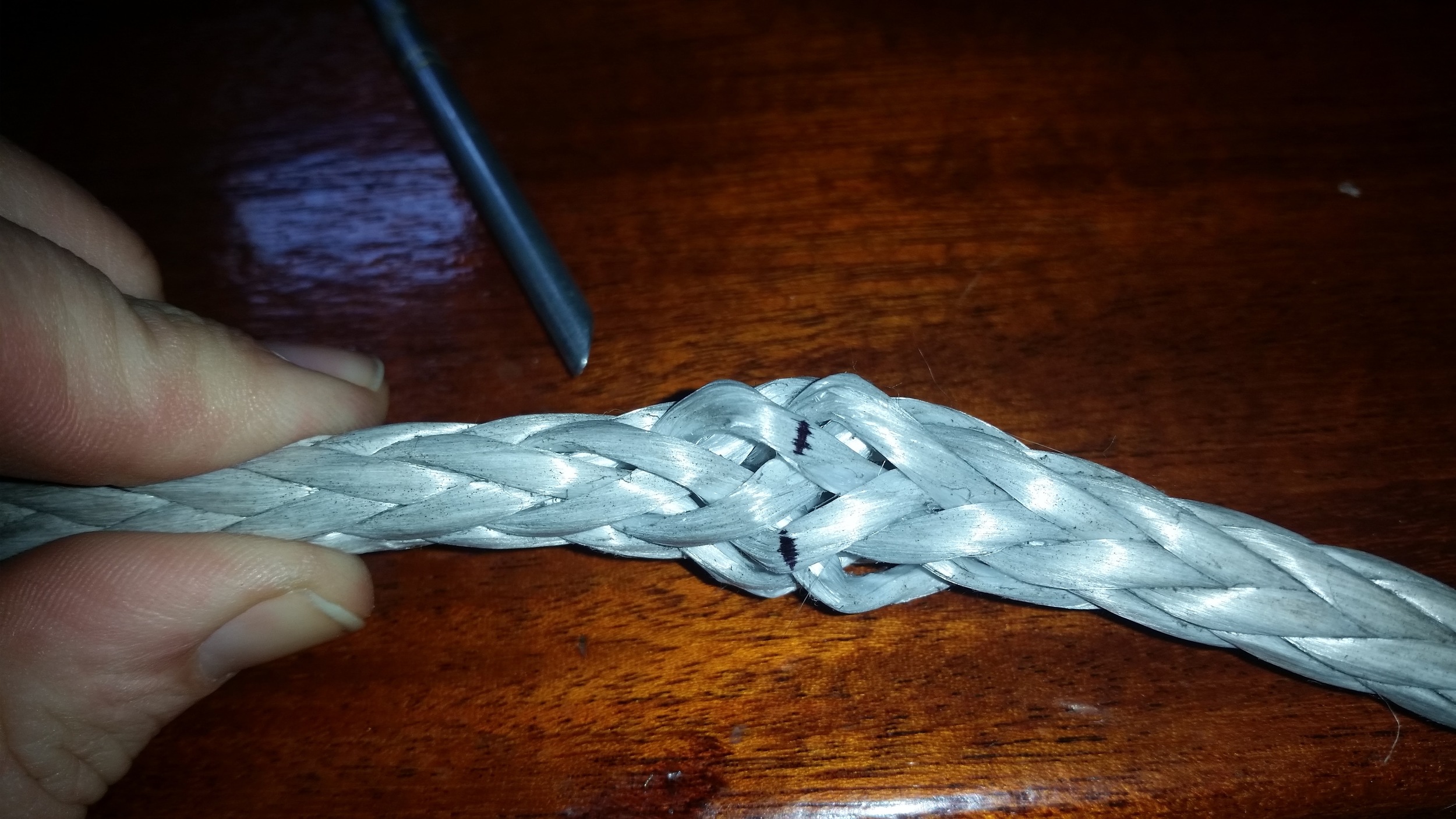When looking at the materials available to rig a sailboat, you will find a few different options:
Metal Wire
Metal Rod
Synthetic Fibers
These three options offer solutions to the different problems of rigging in their own distinct way. Common challenges to deal with are weight, windage, and strength. Each of the options available offers to deal with these issues in their own way while introducing more problems to the equation. As you will see, there is no perfect or best solution, it's just a matter of finding a solution whose problems don't bother you.
Metal Wire rigging is the most common form of standing rigging today. It consists of thin wire strands spun together to form a very strong cable. Metal wire comes in two flavors, Galvanized 7x7, and stainless 1x19. Stainless took over the scene because it is more corrosion resistant than galvanized steel. Metal wire offers minimal windage and incredible strength. It's pitfalls are high weight.
Metal Rod, also know as Rod Rigging is an evolution from metal wire rigging. It consists of a solid rod of stainless steel that composes the entire stay. Rod rigging offers minuscule windage and high strength, but it is also heavy.
Synthetic Rigging is composed of a variety of different fibers which offer incredible strength and minimal weight, but they do pose more windage when compared to metal rigging.
The take home messages of these three points are:
Metal: High Strength, High Weight, Low Windage
Synthetic: High Strength, Low Weight, High Windage
While the three major challenges of rigging (Weight, Windage, and Strength) are dealt with in their own way by metal and synthetic rigging, each type also introduces their own list of problems.
Metal rigging suffers from corrosion. The marine environment is a grueling place for anything made of metal. Galvanized Steel (7x7 wire) will rust in a few years if left unprotected, leading to the supremacy of stainless steel rigging. Galvanized steel can last nearly indefinitely if properly cared for, this involves worming, parceling, and serving the rigging; and regularly coating it in "slurry" which keeps it well oiled. This will allow the rigging to live in a permanent oil bath which will keep water and rust out. The problem is you need to paint this slurry on the rigging all the time! For your average pleasure boater, this is not an option.
Stainless Steel (1x19 wire) will not rust as quickly when left unprotected and uncovered, but it will suffer from crevice corrosion. These are small cracks that form in the metal which can lead to catastrophic failure when the crack breaks open. 1x19 wire also requires special terminals to allow it to connect to the other fittings used in the standing rigging. These terminals can either be swaged or swageless. Swaged terminals use a large and fancy machine to crush the terminal onto the cable and pinch it with such great force that it is impossible to extract it. This act distorts and stresses the terminal which advances the formation of cracks and crevice corrosion. Swageless uses much smaller tools and a one-time-use cone which pinches the wires in the fitting. Swageless fittings are less prone to cracking and can be repaired without the use of fancy machines.
Rod Rigging is a bad choice, the heads of the rod are beat into shape which causes stress cracks to form. Rod rigging offers no warning that a failure is about to occur, and when a failure does occur, it is catastrophic. When the head separates from the rod, the whole stay disengages from its point of duty, leaving the mast unsupported and at high risk of dismasting.
Synthetic Rigging comes in many flavors: PBO, Vectran, Spectra, and Dyneema are some of the most common options available. Each tries to deal with the problems of synthetic rigging while negating all problems of corrosion. Synthetic rigging will not corrode, even in the harsh marine environment. The problems that synthetic rigging does introduce deal with creep, chafe, and UV degradation.
A closer look at these different fibers is discussed here.
Creep is the permanent elongation of a fiber, and it is a problem that plagues synthetic rigging. There are ways to overcome this problem, usually by sizing the stays in a way that creep is a minimal problem to deal with. Over the life of the say, minor adjustments will be necessary to keep the rigging fully tuned.
Chafe is a serious concern with synthetic rigging. A sheet rubbing on a stay will saw through it if left unchecked. Chafe patches can be placed in areas where chafe is known to occur to protect these areas, also negating the issue of chafe.
UV degradation is a concern, but technology has come a long way and Dyneema has the best UV resistance. The way it works, the outer layer is damaged but protects the underlying layers.
It may seem like synthetic rigging is the answer to our sailing dreams, rigging that wont corrode and has minimal weight! It's drawbacks are the need for constant adjustments and windage.
A final point to consider when selecting the material for your standing rigging is how repairable is it in a remote location? If you find yourself in a remote island or out to sea and notice that a stay needs to be repaired or replaced, will you be able to do it with the tools and spares you carry on board?
It is recommended that boats with steel rigging carry a length of wire equivalent to the longest stay on the boat. This way, if a stay were to break, they would be able to manufacture a replacement stay and continue sailing on. The reason they don't recommend carrying more wire is this spare wire is extremely heavy! If more than one stay is damaged, and you only have wire for one, you now find yourself in a difficult situation.
With synthetic rigging, it is very easy to carry a spool of rope in a locker. It doesn't weigh much and stores in a small area. The tools you need are only simple splicing fids, allowing you to repair or replace any number of damaged stays in any location. This repair-ability is a very valuable attribute in favor of synthetic standing rigging.
At the end of the day, you need to ask yourself: "What do you find most important?" and "What downfalls are you willing to work with?"
Metal rigging offers set-it-and-forget-it rig tuning, but suffers from corrosion, high weight, and requires special tools to repair.
Synthetic rigging offers corrosion free, light weight, and ease of repairing; but will need frequent tuning throughout its life.
What do you value most in your rigging?






























